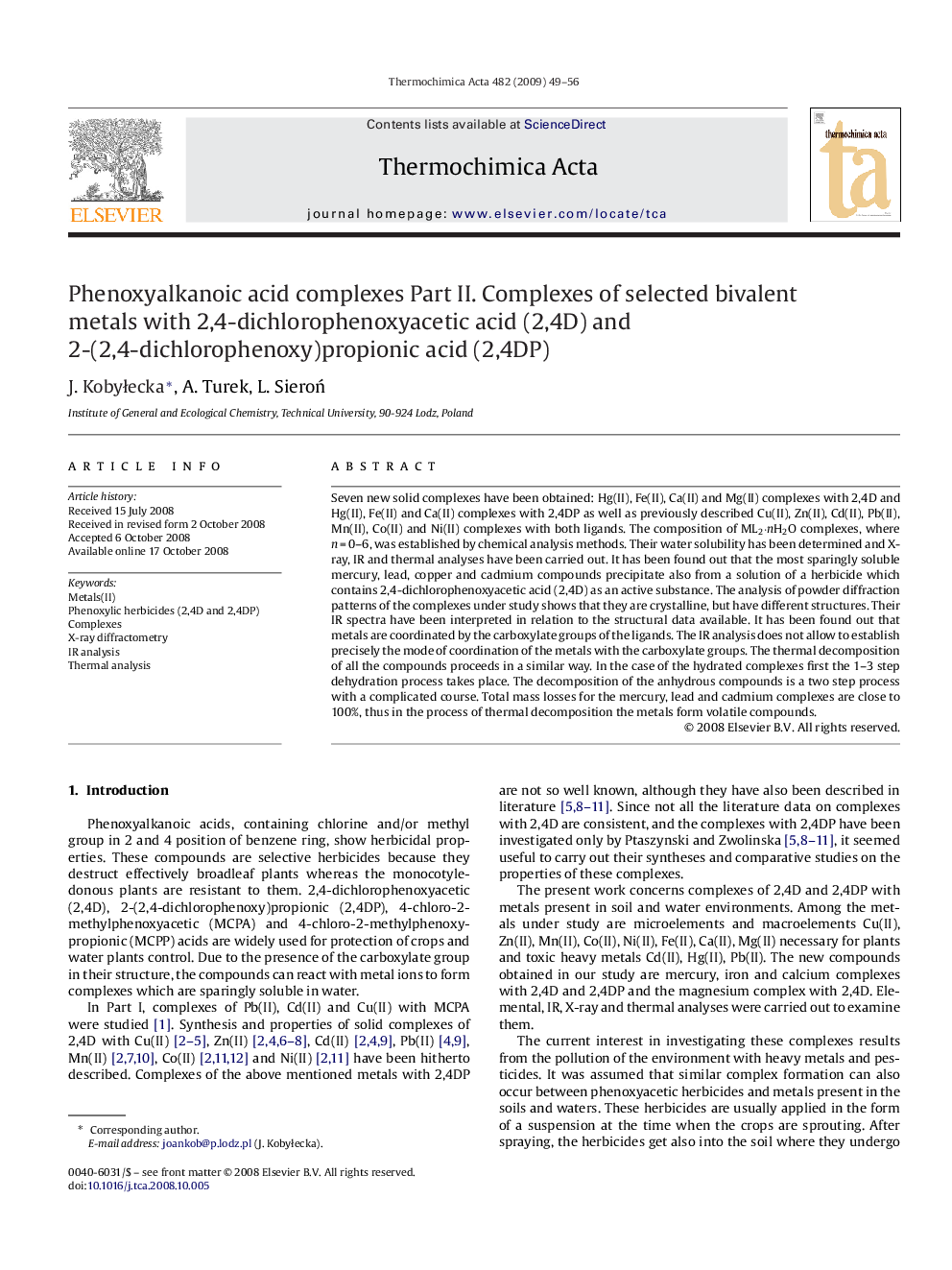| کد مقاله | کد نشریه | سال انتشار | مقاله انگلیسی | نسخه تمام متن |
|---|---|---|---|---|
| 675203 | 1459600 | 2009 | 8 صفحه PDF | دانلود رایگان |

Seven new solid complexes have been obtained: Hg(II), Fe(II), Ca(II) and Mg(II) complexes with 2,4D and Hg(II), Fe(II) and Ca(II) complexes with 2,4DP as well as previously described Cu(II), Zn(II), Cd(II), Pb(II), Mn(II), Co(II) and Ni(II) complexes with both ligands. The composition of ML2·nH2O complexes, where n = 0–6, was established by chemical analysis methods. Their water solubility has been determined and X-ray, IR and thermal analyses have been carried out. It has been found out that the most sparingly soluble mercury, lead, copper and cadmium compounds precipitate also from a solution of a herbicide which contains 2,4-dichlorophenoxyacetic acid (2,4D) as an active substance. The analysis of powder diffraction patterns of the complexes under study shows that they are crystalline, but have different structures. Their IR spectra have been interpreted in relation to the structural data available. It has been found out that metals are coordinated by the carboxylate groups of the ligands. The IR analysis does not allow to establish precisely the mode of coordination of the metals with the carboxylate groups. The thermal decomposition of all the compounds proceeds in a similar way. In the case of the hydrated complexes first the 1–3 step dehydration process takes place. The decomposition of the anhydrous compounds is a two step process with a complicated course. Total mass losses for the mercury, lead and cadmium complexes are close to 100%, thus in the process of thermal decomposition the metals form volatile compounds.
Journal: Thermochimica Acta - Volume 482, Issues 1–2, 15 January 2009, Pages 49–56